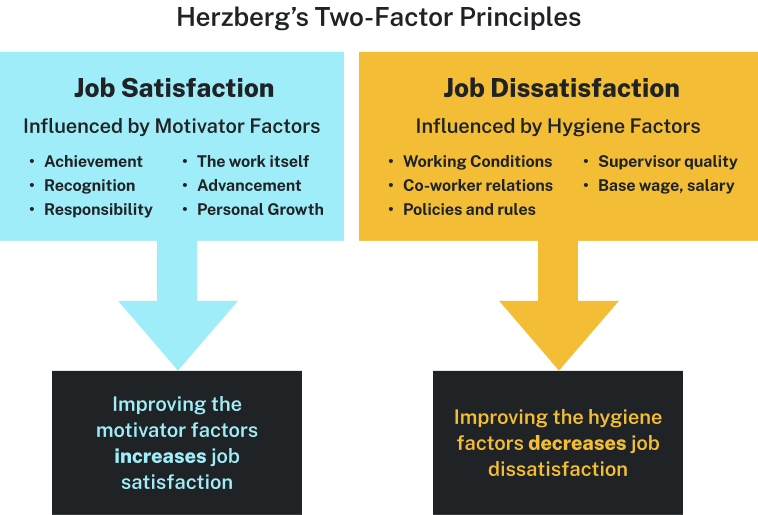Extrinsic and Intrinsic Motivators
American psychologist Frederick Herzberg set out to determine the effect of attitude on motivation by asking people to describe the times when they felt really good and really bad about their jobs. What he found was that people who felt good about their jobs gave very different responses from the people who felt bad.
The results from this investigation led to Herzberg’s Motivation-Hygiene Theory (sometimes known as Herzberg’s Two Factor Theory). Hygiene factors, or extrinsic motivators, tend to represent more tangible, basic needs—i.e., the kinds of needs included in the lower levels of Maslow’s hierarchy of needs. Extrinsic motivators include status, job security, salary, and fringe benefits. Motivation factors, or intrinsic motivators, tend to represent less tangible, more emotional needs—i.e., the kinds of needs identified in the higher levels of Maslow’s hierarchy of needs. Intrinsic motivators include challenging work, recognition, relationships, and growth potential. Motivators are job satisfiers while hygiene factors are job dissatisfiers.

If management wants to increase employees’ job satisfaction, they should be concerned with the nature of the work itself—the opportunities it presents employees for gaining status, assuming responsibility, and achieving self-realization. If, on the other hand, management wishes to reduce dissatisfaction, then it must focus on the job environment—policies, procedures, supervision, and working conditions. To ensure a satisfied and productive workforce, managers must pay attention to both sets of job factors.